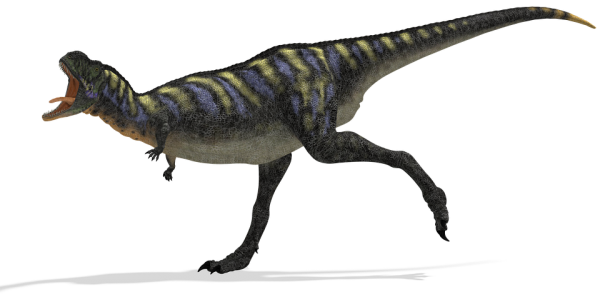
- Rare meat-eating Acrocanthosaurus footprints found near Austin, Texas.
- Fifteen tracks revealed amid post-flood cleanup, sparking interest in ancient behaviors.
- Researchers plan to map sites with 3D imaging, drones for precision documentation.
- Discovery highlights region’s rich paleontological heritage tied to Glen Rose Formation.
Discovery emerges from tragedy: How floodwaters revealed hidden history
The July floods, which caused record-breaking rainfall and displaced thousands, stripped away layers of sediment and vegetation that had concealed the tracks for millennia. Matthew Brown highlighted that the patterns resembled a “crisscross” of movements, suggesting multiple dinosaurs, possibly a hunting group. “This could hint at social behaviors we’re still decoding,” he said. Local resident Carl Stover, who photographed the tracks, remarked on the eerie contrast between modern and prehistoric calamities. “Right here, a house was swept away. A dinosaur once stood where devastation struck again,” he said, underscoring the site’s dual role as a memorial and a museum.Giants of the Cretaceous: Decoding the trackways
The Acrocanthosaurus, a 35-foot predator akin to T. rex but slimmer, left footprints measuring 20 inches each. Nearby, larger impressions may belong to Paluxysaurus, Texas’ state dinosaur, a long-necked herbivore. Kenneth Bader, another UT researcher, stressed the importance of environmental context: “These dinosaurs thrived in a swampy, coastal plain. The Glen Rose Formation’s sediments capture that world.” Travis County lies 200 miles south of Dinosaur Valley State Park, a renowned site for tracks. Yet even outside designated parks, such as near Sandy Creek, Texas’ geology offers endless surprises. “There are dinosaur tracks in backyards,” Brown quipped, “You just have to know where to look.”Documenting prehistory with modern tools
Despite the urgency, researchers are balancing preservation with disaster recovery. Heavy machinery must avoid the sites, as Matthew Brown explained: “Even a single track’s loss would erase data on dinosaur gaits or group dynamics.” His team plans to deploy drones and 3D scanning to create digital archives, surpassing earlier methods from the 1990s. The findings could rewrite narratives about predator interaction. “If these Acrocanthosaurus moved together, it challenges theories they were solitary,” Brown said. Meanwhile, mapping the trails will aid in understanding migration routes and habitat use.A state rich in paleontological storytelling
Texas’ Cretaceous-era legacy runs deep. From the Paluxysaurus to marine reptiles fossilized in the Panhandle, the state’s ancient ecosystems flourished between 144 and 66 million years ago. “Floods and droughts have always shaped this land—exposing fossils when they wash away,” said Brown. Today, the Sandy Creek tracks serve as both a reminder of nature’s violence and its revelation. “Every storm changes the landscape,” Travis County’s Brown reflected. “This time, it brought us a story older than humanity itself.”Ancient footprints offer new insights into dinosaur behavior and history’s timing
The Sandy Creek discovery underscores how environmental upheaval can unveil remnants of ancient Earth. As researchers decode the tracks, they may uncover clues about dinosaur societies while proving, yet again, that Texas’ soil holds secrets waiting to be unearthed—whether through cataclysm or careful study. In a state still grappling with the human toll of recent floods, the tracks remind us: even in tragedy, history finds ways to speak. Sources for this article include: LiveScience.com ABCNews.com CNN.comTrump’s Pentagon quietly blocks Ukraine’s missile strikes on Russia to push peace talks
By Cassie B. // Share
FAMINE declared in Gaza City as global hunger monitor warns of worsening catastrophe
By Zoey Sky // Share
Ukraine’s robot revolution: A new era of warfare amid manpower crisis
By Kevin Hughes // Share
FBI arrests “most wanted” fugitive Cindy Rodriguez Singh in India for murder of 6-year-old son
By Laura Harris // Share
EPA emails reveal SMEAR CAMPAIGN against scientist who challenged East Palestine clean-up claims
By Ramon Tomey // Share
A viral video ignites federal firestorm over Minnesota fraud
By willowt // Share
Russia activates "unstoppable" Poseidon tsunami drone
By kevinhughes // Share
Russian FM Lavrov: Moscow will back China on Taiwan issue
By ramontomeydw // Share
The breakfast clock: Why timing your morning meal is a secret weapon against high cholesterol
By jacobthomas // Share
The Health Ranger's New Year Revolution: The ultimate guide to health, wealth and freedom
By kevinhughes // Share
"Absolute Healing" on BrightU: Experts explore COVID-19 as an engineered bioweapon
By jacobthomas // Share











